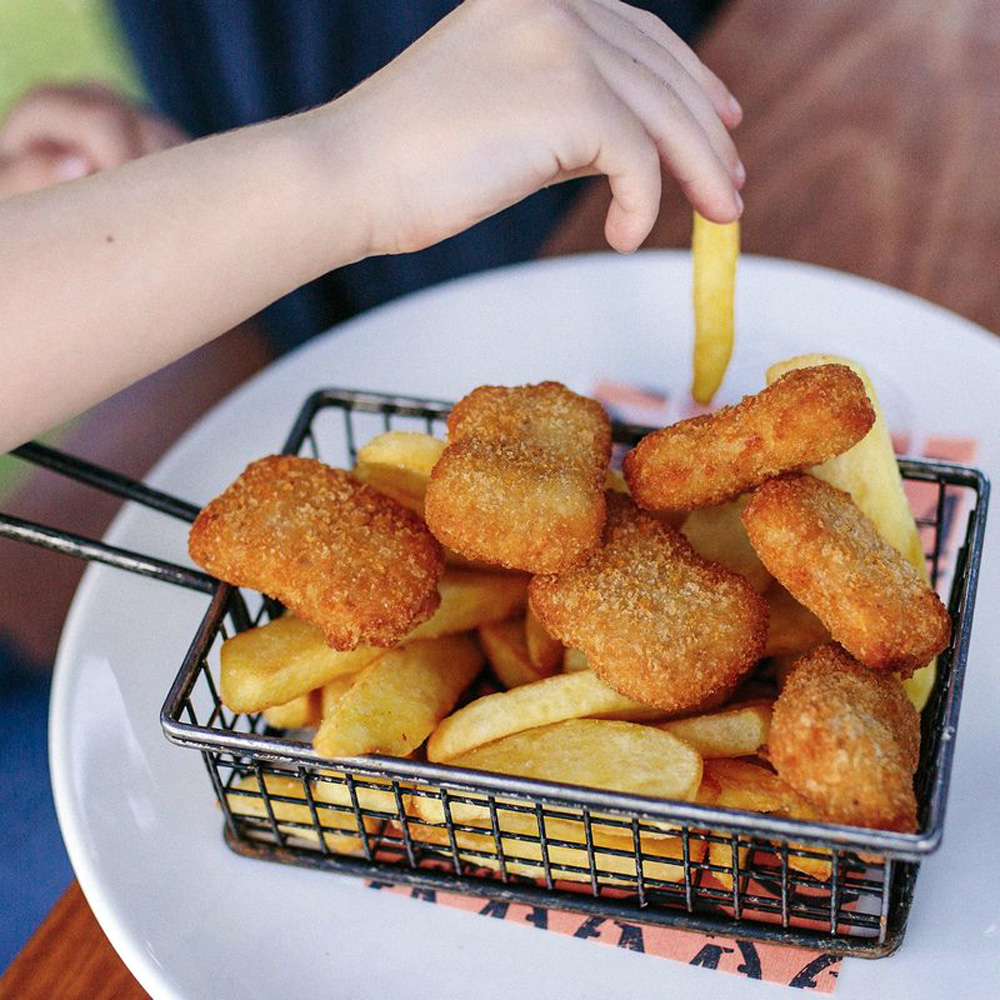FEATURE
The increasing trend of adults ordering from the Kids menu has led to debates over policy flexibility and accommodation, keeping venues on their toes. Jane Louise reports
Regardless of the personal opinions of publicans on the matter, there are growing economic and social, potentially patron-pleasing reasons for a pub to get more in tune with being green. Clyde Mooney reports
The trend of adults ordering from that section of the menu intended for children has been growing in recent years, capturing attention across the food industry and social media.
Recent surveys in Australia and the United Kingdom have shown that 75 to 80 per cent of respondents believe it is okay to order from the children’s menu.
Kids' menus typically offer simple, smaller-portioned, ‘safe’ food as an easy option for parents who wish to enjoy their local and eat out with the family.
While these menus work very well for children, there has been controversy over whether adults should be able to have access to these menus as well.
There are a few reasons for the increase in this trend, but two seem to be the primary motivators.
The first is a clear sign of the times; as the cost of living has dramatically increased and less people are choosing to dine out, choosing from the kids’ menu is more often viewed as a budget-friendly option. Typically, meals cost around half that of an adult portion. This can be seen as a great value-for-money choice when things are tight.
Connected to this is that some diners prefer to evoke a sense of nostalgia, or they just find certain foods comforting. This can further tie in with living with greater overall uncertainty as costs rise, along with other pressures, such as uncertainty around housing and employment.

Discrimination or policy?
The second main reason is that for some, the portion sizes are simply considered more appropriate.
Adults may prefer the smaller portions for a variety of reasons.
Some diners prefer a choice of items from the menu rather than one meal, while others just aren’t that hungry.
While some are avoiding the temptation to overeat, or just wish to maintain a balanced diet, others choose smaller portions due to legitimate health concerns.
Some adults, such as those who have had bariatric surgery, physically cannot eat a large meal.
In a recent poll undertaken by nine.com.au, one respondent shared that their elderly mother, who suffers from dementia, would only order nuggets and chips from the kids’ menu and was not open to any other choice.
The respondent felt discriminated against as there was no concession given for her mother’s situation.
A Toowoomba mother, Cherie Pugno, found herself similarly frustrated. Her teenage daughter Mia, who has autism and an intellectual disability, was denied a kids' meal at Newtown Hotel Toowoomba due to her age.
FEATURE

Sixteen-year-old Mia, who strongly relies on routines, was devastated when she couldn’t have her favourite meal of chicken nuggets and chips. Support worker Stefanie Martinelli, who had dined at the hotel with Mia before, was surprised when the server questioned Mia’s age.
Despite offering to pay extra, Martinelli was told that kids' meals were restricted to those under twelve and was instead offered a chicken schnitzel. Unable to resolve the issue, Martinelli left with Mia and eventually found another pub that served the desired meal.
Irritated by the inflexible policy, Martinelli reported the incident to Mia's mother, Cherie Pugno, who then contacted the hotel. The manager reiterated the strict policy without offering an apology, even when Pugno offered to pay the adult price for the kids' meal in the future. Pugno felt their efforts to make public outings enjoyable for Mia had been undermined.
Both Pugno and Martinelli were disappointed by the lack of empathy and flexibility and hoped hotels such as the Newtown would reconsider their policies, to better accommodate individuals with special needs.
Its operator, the Hakfoort Group, has not commented on the incident.
In an online discussion on this question, one Redditor commented in obvious frustration, “gd sometimes I just want to partner nugs and fries with my $19 glass of Pinot, is that so much to ask?”
Perhaps it is.
A delicate balancing act
On the other side of the argument, venues often offer children’s menus at or below cost, as a way to bring in extra custom. With children making up one-fifth of the Australian population, getting the offer right is crucial.
Benefits include differentiation from nearby venues, keeping families happy and offering a convenient way to order kid-friendly food.
To further differentiate themselves, some gastropubs have begun to offer higher quality and more sustainable options on their kids’ menus.
These venues rely on the average spend, assuming money will be made from the accompanying adult’s meals.
UK operator Brendan Padfield, who owns the Unruly Pig in Suffolk, recognised that a delicate balance between the two points of view was needed.
He pointed out that if all adults chose to eat from the children’s menu, his and other pubs like the Unruly Pig would have to close their doors.
Yet there was a place for pragmaticism too: portions (and prices) of children’s options could just be doubled, or diners such as the elderly could be able to choose from the kids’ menu.
Venues have already addressed this argument in a variety of ways.
Canberra Southern Cross Club, for example, offers a deal where kids eat free on Wednesdays, as long as a number of requirements are met. The offer is only available to members who buy a main meal with a minimum value (not a combination of cheaper options), and the child must be under 12 years and dining with the adult.
In return, the kids’ menu includes healthier options such as ‘make your own tacos’ and a ‘whole foods tasting plate’ alongside traditional offerings.
Other venues offer special meals for the elderly or those on a pension.
In a Reddit thread on this topic, one commenter suggested creating an entirely separate menu for families, where conditions to the children’s meals were stipulated. The regular menu would have no mention of kids’ meals.
Other commenters believed having half-sized options on the regular menu would suffice.
What is obvious from this debate is that clear boundaries do need to be set.
Regardless of which side of the fence a person falls, menus should ideally be adaptable, the marketing straightforward and services adjusted where the need is obvious.
In the current climate, ultimately venues who allow staff to use a flexible approach while still holding firm to their policies might find the most success.
Balancing flexibility with clear guidelines ensures that diverse customer needs are met while maintaining operational efficiency.
As dining preferences evolve, venues should aim to adapt thoughtfully, keeping both empathy and practicality in mind to ultimately accommodate all paying patrons.
